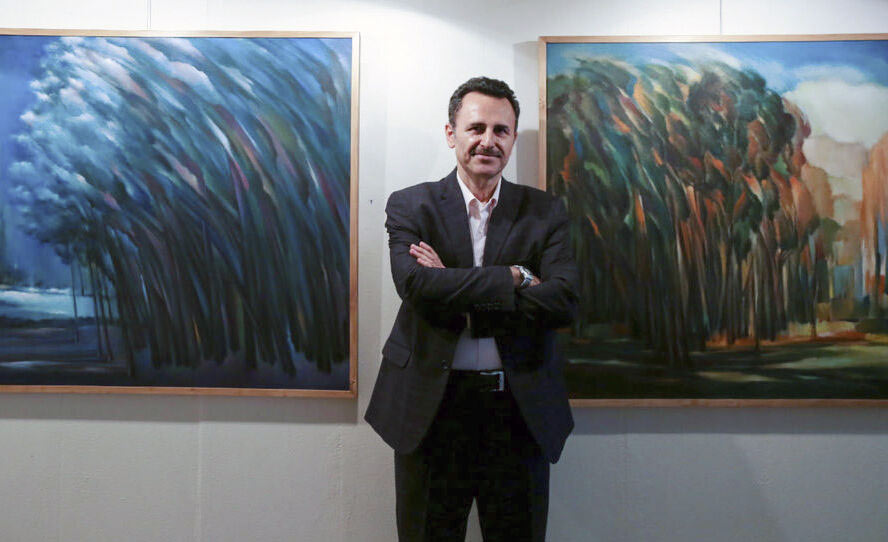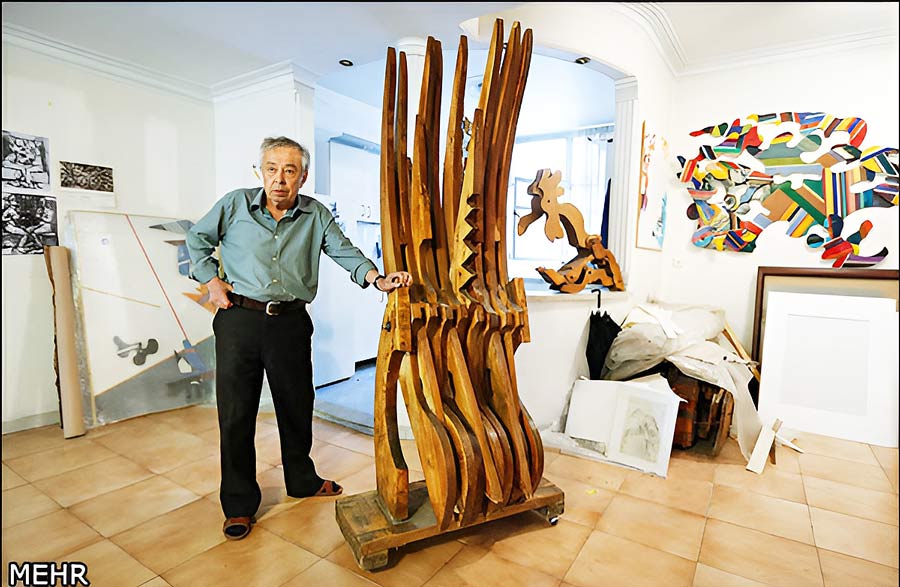Online exhibition requires culture building

Alireza Ismaili, whose latest solo exhibition of his paintings is being held online at the Golestan Gallery, called Corona a factor in the stagnation of the art scene and said: “The online exhibition needs to create a culture; Because online presentation of works in Iran is not acceptable and desirable for everyone.
According to the Artmag quoted by IRNA, a virtual exhibition of Alireza Esmaili’s paintings was held at Golestan Gallery. In this exhibition, Ismaili exposed a collection of his paintings, the main theme of which was trees and women.
Although Ismaili is an artist with a style, has been painting professionally for many years, and has held several exhibitions so far, his online exhibition has not met with much success.
He believes that although Corona disease has affected all parts of the world, it has brought about fundamental changes in human and social relations and changed the way many events are performed and held; But unfortunately in the field of art, it caused a kind of recession. The closure of cinemas, theaters, galleries and cultural events is part of the effects of the Corona disease outbreak.
We sat down to talk with this artist under the pretext of the exhibition and how to hold this event.
Tell us a little about yourself first, what factors went hand in hand when you decided to enter the Valley of Art?
I was born in Tehran; But from my childhood, I went to the villages of Mazandaran and the coastal cities of the Caspian Sea with my grandmother; I went to Babolsar, Fereydunkenar, Mahmudabad, Nowshahr and several other cities. From there, I became very accustomed to nature and constantly wandered along rivers, forests and beaches, and this nature was later subconsciously highlighted in my paintings. Of course, I have been interested in painting since childhood. I wrote my homework with crayons and was repeatedly punished by my teachers for doing so.
Given your interest in painting, why didn’t you go to the conservatory to continue your education?
Despite my interest in painting, I wanted to become an architect, so I got a degree in mathematics and participated in the engineering entrance exam several times, but I was not accepted in the field of architecture. Finally, I entered Allameh Tabatabai University in the field of English language and literature. At the same time, I participated in the art entrance exam and was accepted in the field of graphics at the University of Arts, and I graduated in 1987.
As a student, I met friends who today are successful and renowned painters. Mr. Ahmad Vakili and Mr. Karim Nasr. Mr. Vakili and I went to Qeytariyeh Park and worked on watercolors. I got the first box of Winsor watercolors as a gift from Ahmad Vakili. I was constantly attending practical painting classes for children and at the same time I was showing my work to Bahman Boroujeni, who gave me good hints and tips and even advised me to change my major and join the group of painting children. Graphics is a practical and advertising field, and of course I had to think about earning a living, so I continued this field and got a bachelor’s degree.
How did studying graphics affect your work?
The element of illustration dominates my graphic work, and this is mostly due to the background of my work in painting. Most of the covers of my books have been painted and illustrated. In the creation of graphic works, the creative idea plays an important role, when the idea comes, the appropriate technique comes with it. Of course, the fields of graphic design are very wide. I worked in almost all graphic fields, but I did most of the logo design and cover of books and magazines, but it should be noted that graphic work always has a client and finally his points of view should be taken into account. But there is no one to order a painting. Painting is a completely personal and individual matter and is created in the studio or outdoor space without any intermediaries and is a complete reflection of the spirit and mind of the painter and therefore needs internal and external revelations, which is in constant search of the painter. It is achieved and sometimes it is very exciting and attractive, and of course it has its failures and victories.
If you want to periodize your works, how many periods are your works divided into?
In the case of painting periods, it may be divided as follows: the period of inanimate nature, the period of horses, the period of portraits of women and horses, the period of stones, the period of trees, and the period of women and trees.
Your topics will continue in different forms in the next periods of your career. For example, rock footprints can be seen in your large collection of trees. For example, although in the collection of trees we see a kind of liberation and freedom and movement, but in some works, although there is no stone, but we see the weight and weight of the rocks. In a way, it is these stones that dominate the overall space. Like painting number 5 of your recent collection; In this painting, it is the cloud that evokes such weight and heaviness in the work.
I think the answer to your questions lies in the questions themselves. Explaining and interpreting my work is thought-provoking from the point of view of others, but I really speak with painting and I can not explain my work with words. These courses sometimes interfere with each other and leave their mark. Trees have always been in my work. I love the tree. Life depends on the tree as much as it depends on the climate. It is impossible for me to imagine that there is no tree somewhere. Maybe what my trees have in common with the miniature painting in the cedars I paint. Cypress in our culture and literature is a symbol of freedom, endurance and immortality, a tree that is green in all seasons. I am a modernist painter and I have nothing to do with miniature painting. I think the tree will somehow be present in my future paintings.
Given that you are one of the artists who held online exhibitions during the Corona outbreak, what do you think about such exhibitions?
The online exhibition is still not accepted and desired by everyone in Iran. The buyer prefers to see and buy the artwork up close. The exhibition of my works, although numerous and diverse, did not sell well. Only 5 small works out of 67 were sold and this was not at all satisfactory. In my opinion, the establishment of an online exhibition has not yet taken place in Iran, and it is necessary to plan and then create a culture to continue its activities in this field.
Alireza Esmaili is a painter and graphic artist born in 1957 in Tehran. He graduated in graphic arts from the Faculty of Decorative Arts. He started painting seriously in college and under the supervision of Bahman Boroujeni, and in addition to painting, he has pursued his professional activity in the field of graphics. Ismaili is one of the first artists of Golestan Gallery who was introduced to the art community by this gallery in 1990 and his exhibition was well received by the art community. Ismaili has held six solo exhibitions in Golestan Gallery from 1990 to 2000, and has since held exhibitions in Aria, Seyhoun and Di Gallery. The works of this artist have been exhibited in more than 23 group exhibitions and prestigious biennials of design, painting and graphics.









